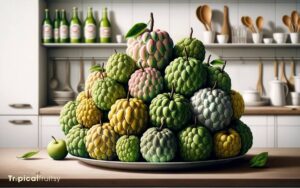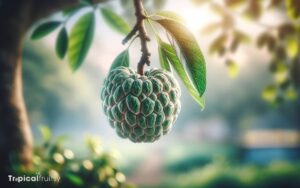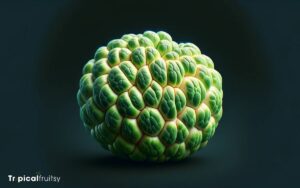How to Grow Custard Apple Tree? 6 Easy Steps!
Growing a custard apple tree involves selecting the right location with full sun exposure, ensuring well-draining soil, and maintaining consistent watering and feeding.
Planting is best done in the spring, and regular pruning is required to manage the tree’s size and shape. Protecting the tree from pests and diseases is crucial for healthy fruit production.
Custard apple trees, or Annona squamosa, thrive in tropical to subtropical climates and require specific conditions to bear fruit.
Here’s a guide to grow these trees successfully:
When planting a custard apple tree, dig a hole that is about twice as wide and deep as the root ball of your sapling, and mix in some compost with the native soil to improve fertility.
For a bountiful harvest of custard apples, proper care including timely pruning, regular feeding, and adequate watering is essential.
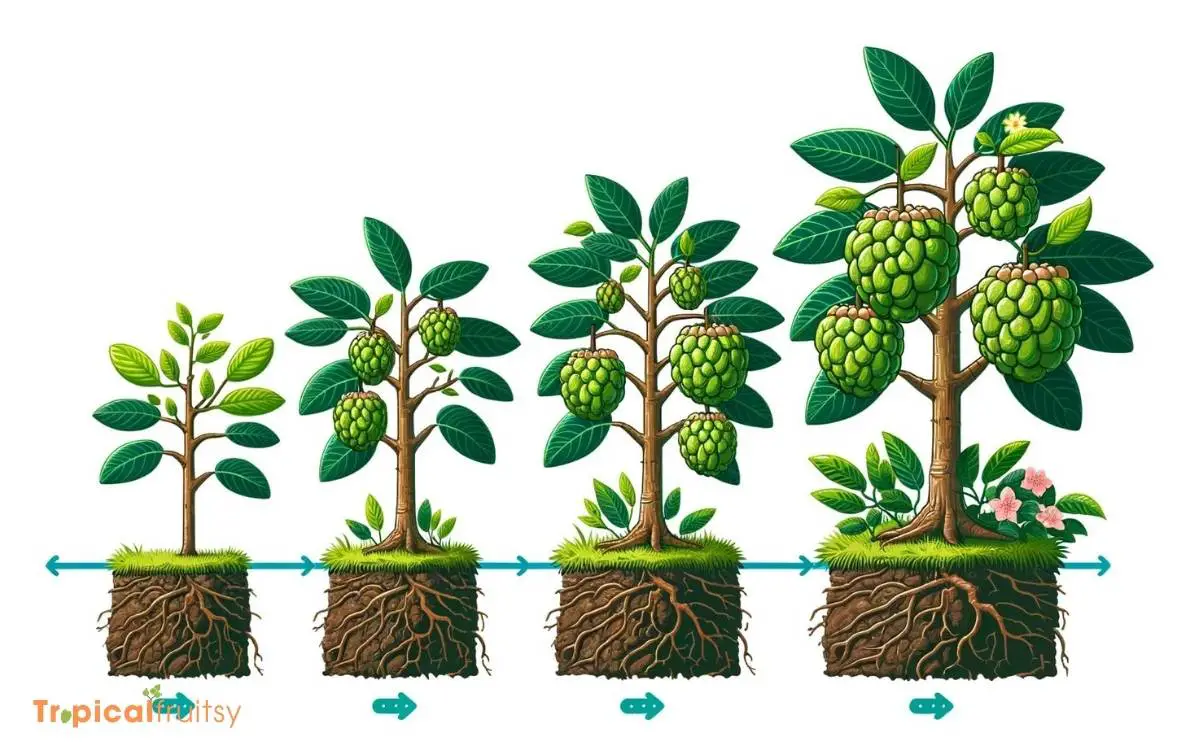
Key Takeaway
Step 1: Selecting Your Sapling
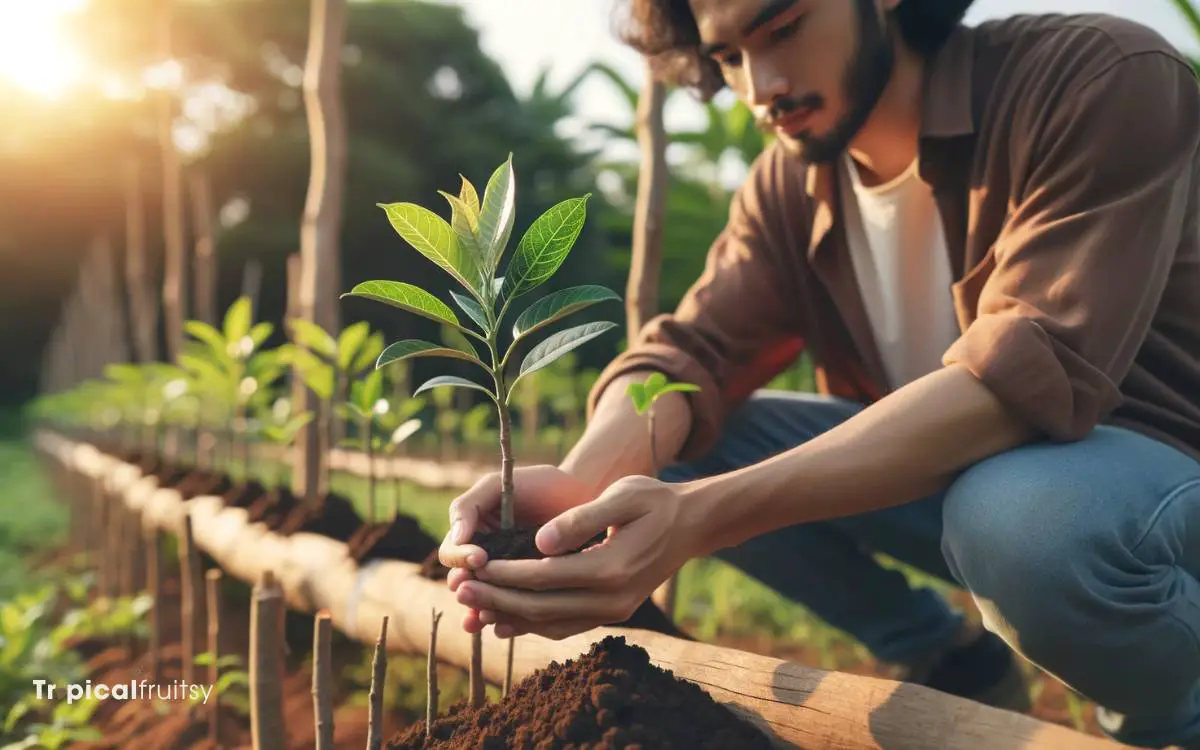
I’ve chosen several healthy custard apple saplings to ensure a strong start for my orchard. It’s critical to select specimens exhibiting vigorous growth, robust root systems, and no signs of disease or pest damage.
Ideally, the saplings should be about one year old, as this age provides a balance between youthful adaptability and established hardiness.
I inspect each sapling for a well-formed canopy and sturdy stem structure, indicators of optimal genetic health and potential for prolific fruit production.
It’s also essential to verify that the saplings are true to the desired cultivar, ensuring the fruit characteristics meet my expectations.
With these carefully selected saplings, I’m prepared for the next crucial step: finding the ideal planting location that will nurture these young trees to maturity.
Step 2: Ideal Planting Location
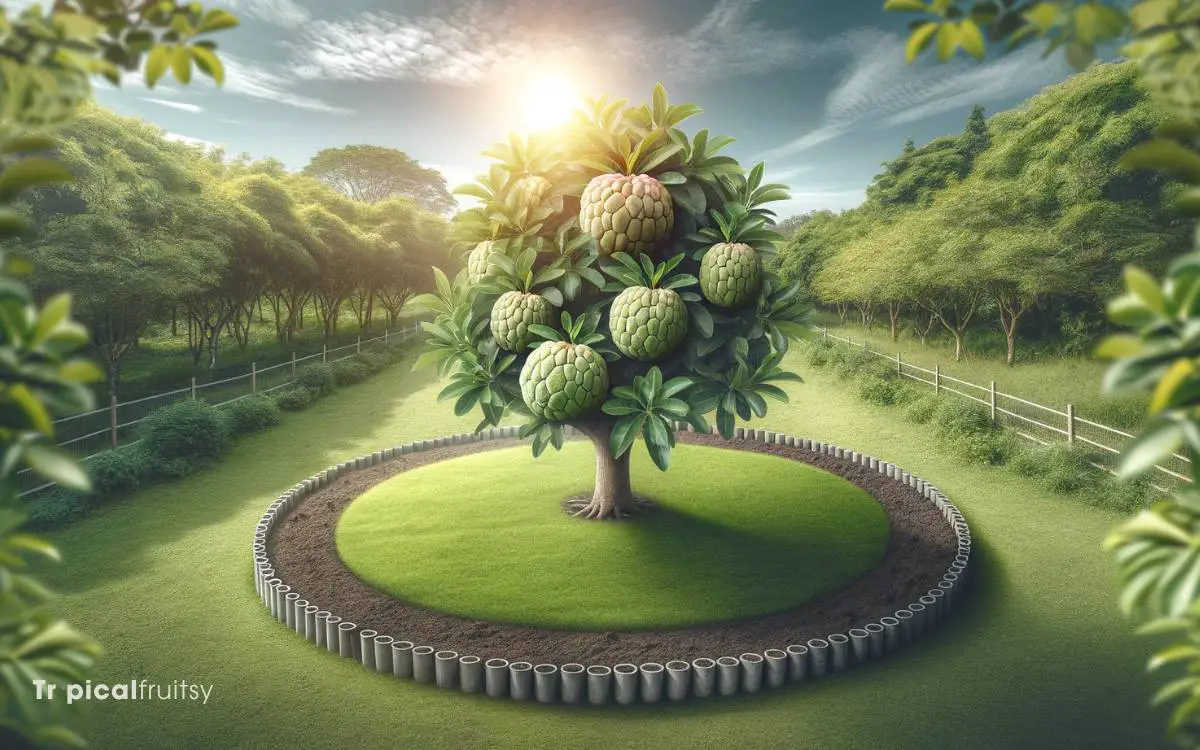
With my carefully chosen saplings in hand, I’ll now focus on situating them in an environment that’s well-suited for their growth, considering factors like soil quality, sunlight exposure, and drainage to ensure they thrive.
Custard apple trees flourish in well-draining, loamy soil with a neutral to slightly acidic pH.
They demand a location receiving full sun for most of the day; this is non-negotiable for the development of strong, fruitful trees. I’ll avoid areas prone to waterlogging, as custard apples are susceptible to root rot.
I’ll also ensure ample space for the trees to expand – they’ll need room to stretch both above and below ground.
With precise attention to these environmental conditions, I’m setting the stage for a healthy, robust custard apple orchard.
Step 3: Soil Preparation and Planting
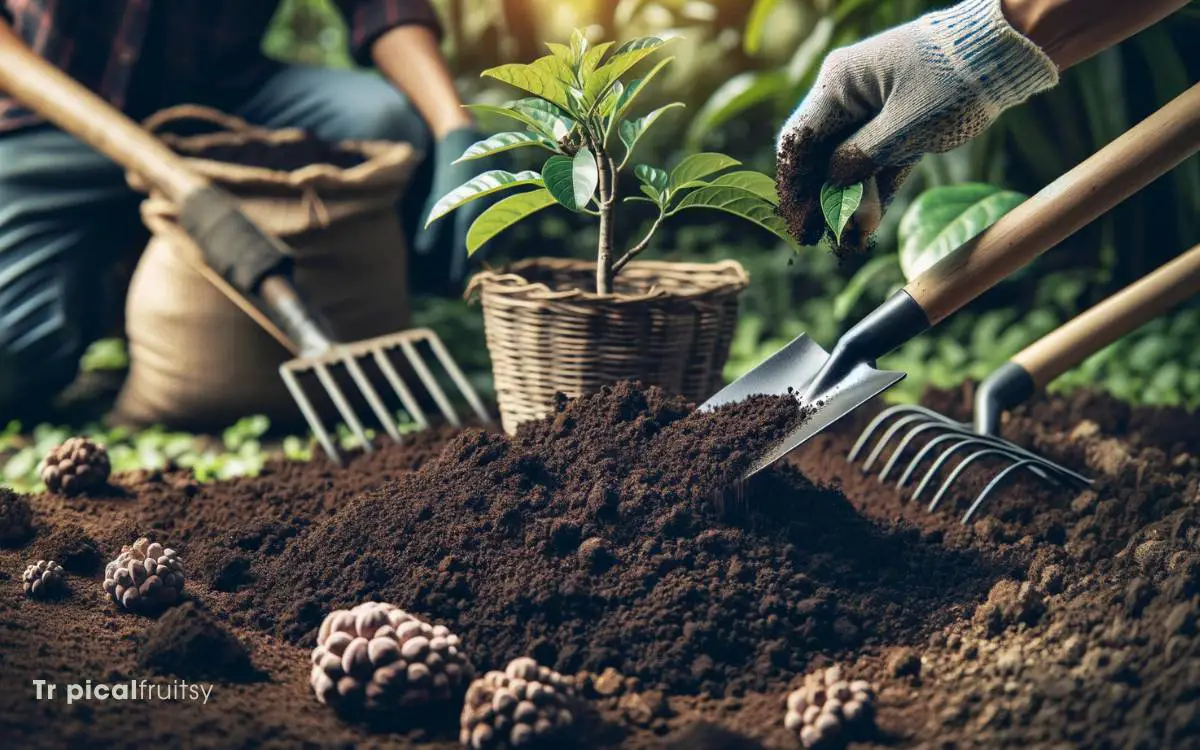
Having selected the perfect spot, it’s time to prepare the soil, enriching it with organic matter and ensuring proper drainage before planting my custard apple saplings.
I’ll first test the soil’s pH, aiming for a slightly acidic to neutral range—ideally, between 6.5 and 7.5.
I’ll then incorporate well-rotted compost or aged manure to boost the soil’s fertility and structure, which is crucial for the tree’s root development and nutrient uptake.
I’ll dig a hole twice as wide and just as deep as the root ball of the sapling to encourage root expansion.
After placing the sapling in the hole, I’ll backfill with the amended soil, ensuring that the graft union remains above ground level to prevent rot. Watering thoroughly after planting is essential to settle the soil around the roots.
Step 4: Watering and Mulching
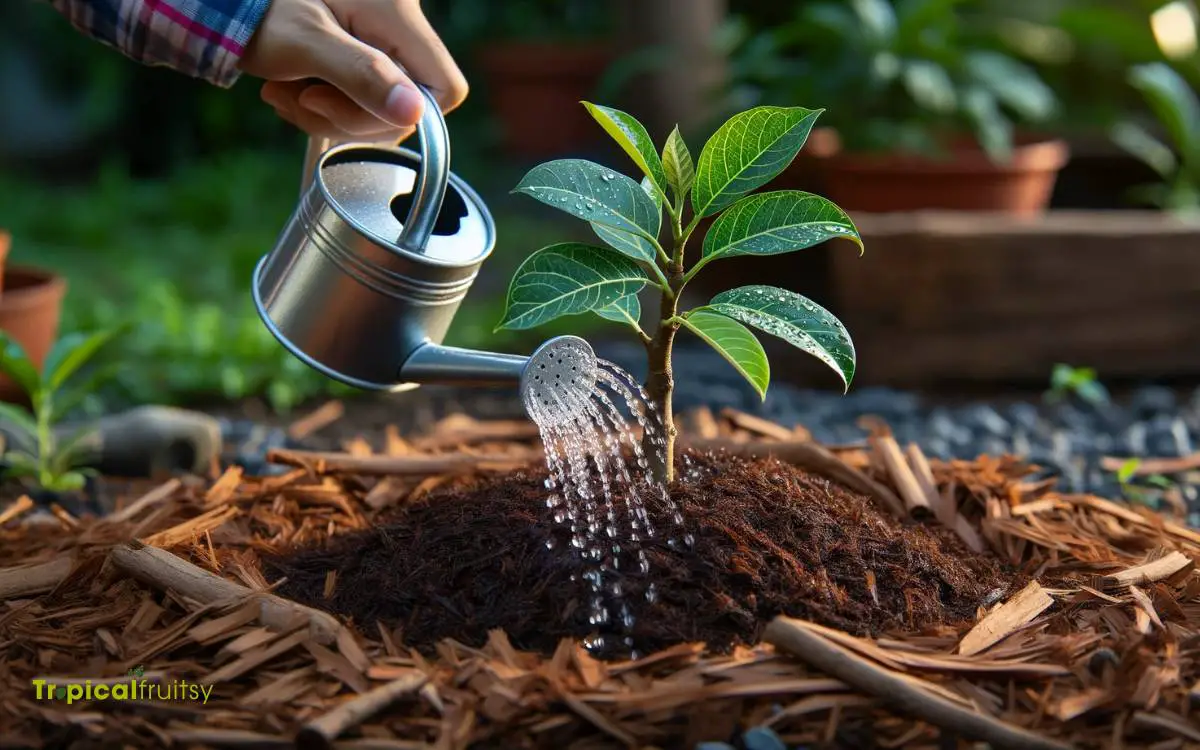
After planting my custard apple tree, I’ll focus on establishing a consistent watering schedule and applying mulch to conserve moisture and regulate soil temperature.
Here’s how I’ll ensure the tree receives optimal care:
Watering Frequency:
Custard apple trees require regular watering, especially during their formative years. I’ll water deeply once a week, allowing the soil to dry slightly between sessions. This approach encourages the roots to grow deeper, seeking moisture and nutrients.
Mulch Application:
I’ll apply a 2-3 inch layer of organic mulch around the base of the tree. This layer will act as an insulator, keeping the soil cool and moist.
Monitoring:
I’ll regularly check the moisture level of the soil, ensuring it’s neither waterlogged nor too dry. Adjustments to watering will be made based on seasonal changes and rainfall patterns.
What are the Steps for Growing and Taking Care of a Custard Apple Tree?
The key to successfully growing a custard apple tree is following the easy steps for custard apple tree care. Start by selecting a sunny spot with well-draining soil. Plant the tree and water it regularly. Prune the tree in its early years to promote strong growth. Keep an eye out for pests and diseases and take appropriate measures to protect the tree. With proper care, your custard apple tree will thrive.
Step 5: Fertilization Schedule
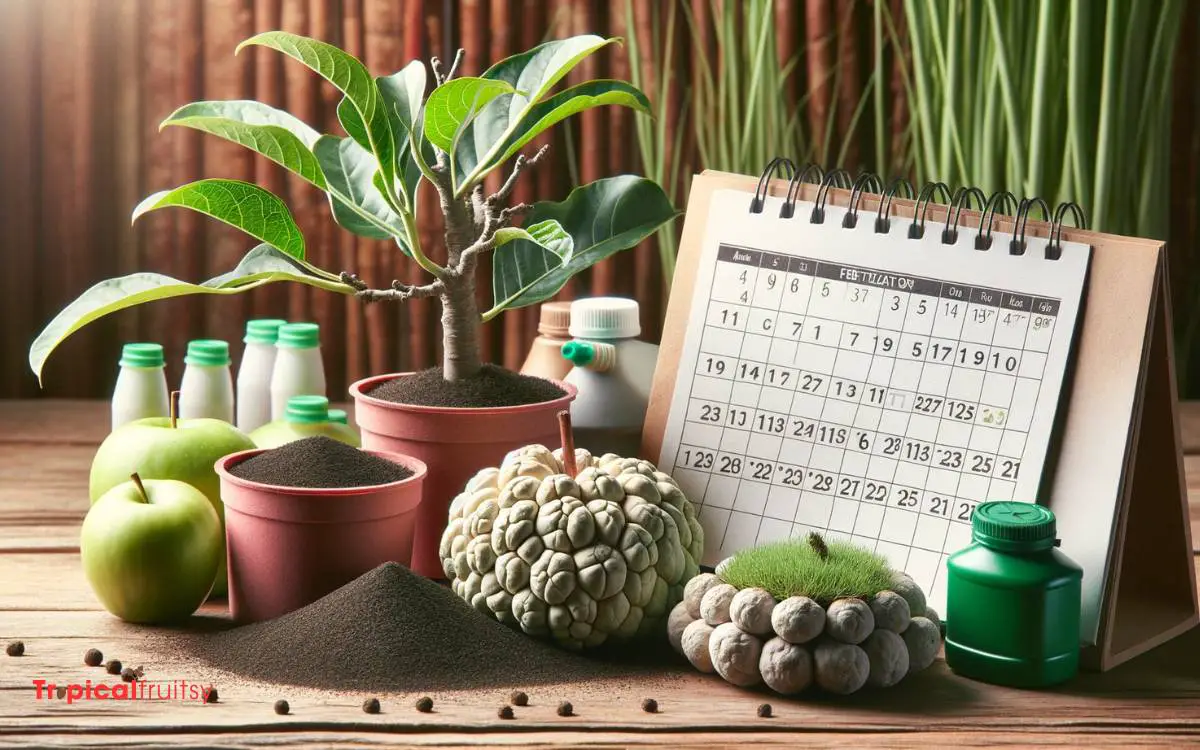
To ensure my custard apple tree thrives, I’ll establish a fertilization schedule tailored to its growth stages and nutritional needs.
Initially, I’ll apply a balanced fertilizer such as a 10-10-10 (NPK) formulation during the growing season, starting in late winter or early spring.
This provides an equal proportion of nitrogen, phosphorus, and potassium, which are crucial for the tree’s vegetative growth, root development, and fruit production.
I’ll continue to fertilize every three months, but I’ll adjust the formula as the tree matures. During fruiting, I’ll switch to a phosphorus-rich fertilizer to enhance flower formation and fruit set.
I’ll always ensure that the soil is moist when I apply fertilizers to prevent root burn and to facilitate nutrient uptake.
Regular soil testing will guide my adjustments to the fertilization regimen, ensuring optimal tree health and productivity.
Step 6: Pruning and Maintenance
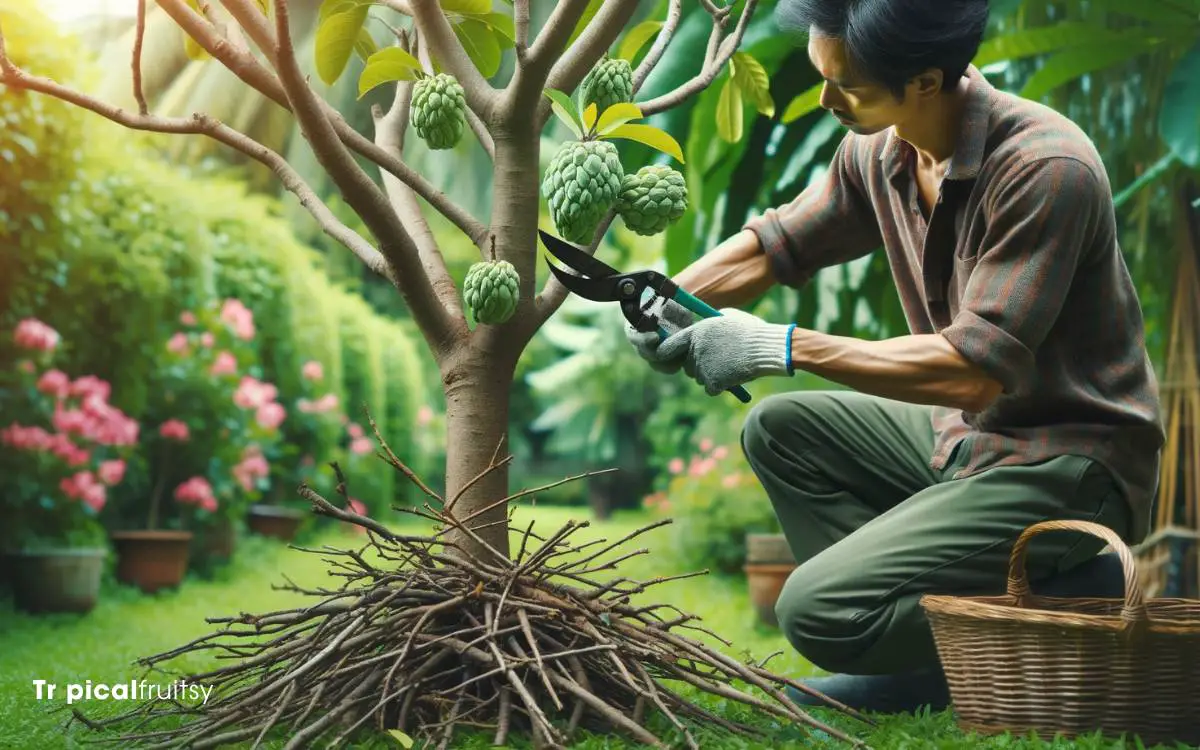
Turning our attention to pruning and maintenance, it’s critical to note that the custard apple tree’s health and fruit production significantly benefit from proper care.
I’ll guide you through identifying the optimal pruning season, which ensures the removal of dead or diseased branches and promotes better light penetration and air circulation.
Additionally, I’ll outline maintenance best practices that guarantee the tree’s robust growth and longevity.
Optimal Pruning Season
Why should I consider late winter or early spring as the best time to prune my custard apple tree for optimal health and fruit production?
This period is critical for several reasons:
- Dormancy: Pruning during dormancy, before the spring growth begins, minimizes stress on the tree. It’s easier to see the structure without leaves, allowing for more precise cuts.
- Wound Healing: The upcoming spring growth spurt aids in rapid healing of pruning wounds, reducing the risk of disease entry.
- Energy Focus: Removing dead or diseased branches redirects the tree’s energy to produce robust, fruit-bearing growth rather than sustaining unproductive or unhealthy limbs.
Practicing scientific pruning techniques during this optimal season ensures the custard apple tree remains vigorous, with enhanced fruit quality and yield.
Maintenance Best Practices
Following the rhythm of seasonal care, I’ll now delve into the maintenance best practices to keep your custard apple tree thriving after proper pruning.
It’s critical to implement a regimen that includes regular monitoring for pests and diseases. I’ll ensure the optimal uptake of nutrients by fertilizing with a balanced, slow-release formula tailored to the tree’s growth stage.
I won’t neglect the importance of consistent irrigation, especially during dry spells, to maintain adequate soil moisture without waterlogging the roots.
Furthermore, I’ll apply mulch to conserve moisture, regulate soil temperature, and suppress weeds. Pruning should be conducted to remove dead or diseased wood, and to promote air circulation within the canopy.
Conclusion
In nurturing my custard apple tree, I’ve selected the healthiest sapling, provided it with the perfect sunny spot, and prepared the soil meticulously.
I’ve watered it judiciously, mulched for moisture retention, and adhered to a strict fertilization schedule. Through regular pruning and maintenance, I’ve ensured robust growth.
As I savor the fruits of my labor, I’m reminded that patience, precision, and care converge to cultivate not just trees, but the essence of life itself.

